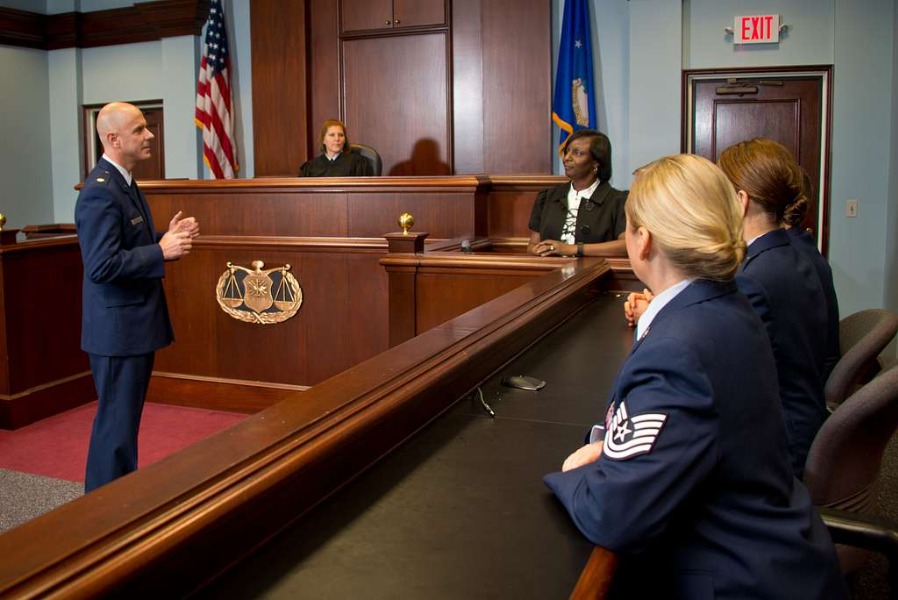Published by The Lawfare Institute
in Cooperation With

From today’s Supreme Court oral argument in Hawaii v. Trump, it appears that deference to executive judgments about foreign policy and national security has carried the day on President Trump’s travel ban (EO-3). Apart from Justices Sonia Sotomayor and Ruth Bader Ginsburg, all of the justices seemed to some degree to credit the government’s contention that EO-3 emerged from a deliberative interagency process to improve foreign governments’ information practices regarding their nationals’ entry into the United States. While it can be risky to predict the outcome of cases based on oral argument, the biggest question for the court as a whole seemed to be whether to simply hold that EO-3 was unreviewable or to uphold EO-3 on the merits. At least five justices seemed skeptical about the challengers’ statutory and Establishment Clause arguments.
On reviewability, Chief Justice John Roberts and Justices Anthony Kennedy and Neil Gorsuch probed whether the challenge was properly before the court. Kennedy asked about whether the general rule barring review of consular denials of visa applications governed the case, and Roberts asked Solicitor General Noel Francisco how much weight to accord the court’s earlier decision in Haitian Centers Council v. Sale. In Sale, the Court reached the merits of a challenge to an earlier order under the same provision that Trump has relied on: 8 U.S.C. 1182(f), which authorizes the president to bar the entry of “any” foreign national or “class” of foreign nationals that the president deems to be “detrimental to the interests of the United States.” The Sale court did not expressly address reviewability. Roberts pointed out that the court had to resolve the question of jurisdiction in the challengers’ favor in Sale, since the court considered jurisdictional arguments and nonetheless reached the merits. However, the question itself indicated that Roberts was considering reviewability as a simple way to address Hawaii’s challenge to EO-3 (as Josh Blackman has suggested here).
Gorsuch asked whether third parties such as the state of Hawaii can raise questions about a foreign nationals’ removability. His question suggested that statutory limits on third parties in the removal context would also logically apply to Hawaii’s challenge to EO-3, which concerned visa applications by foreign nationals abroad. Neal Katyal, arguing for Hawaii, asserted that the challenge here focused on broad questions of executive authority, not on particular visa decisions.
On the merits, Roberts set the tone by asking whether the president could hypothetically invoke 1182(f) in response to intelligence reports that nationals of Syria or another country were planning to enter the U.S. to engage in terrorist attacks. According to Roberts, it would be no easy task for judges to distinguish that case from the concerns cited in EO-3.
Justice Elena Kagan seemed to share concerns raised by Roberts, Kennedy, and Justice Samuel Alito (and quite possibly also shared by Gorsuch and Justice Clarence Thomas) about second-guessing national security determinations made by the executive branch. In a telling exchange, Kagan asked Katyal which provision of the Immigration and Nationality Act (INA) prohibited the president’s broad reading of 8 U.S.C. 1182(f). In response, Katyal asserted that the Court’s administrative law precedents, including FDA v. Brown & Williamson, required looking at the statute as a whole, including its comprehensive scheme for granting visas, reliance on individual consular determinations, and bar on discrimination based on national origin. (Immigration law scholars made this argument in an amicus brief in which I served as co-counsel with Shoba Wadhia of Penn State and WilmerHale’s Alan Schoenfeld, Ben Gifford, and Francisco Unger.)
Unfortunately, a majority of the court seemed unpersuaded. Alito noted that the court had to first reckon with the plain meaning of 1182(f), which applies to “any” foreign national. According to Alito, plain meaning would prevail over the challengers’ argument that the statute as a whole imposed sharp limits on the president’s authority.
Moreover, Francisco appeared to make headway with Kennedy by arguing that EO-3 was a tailored exercise of authority. Kennedy pointedly disagreed with Katyal’s assertion that EO-3 amounted to a “perpetual” ban on immigration from the countries covered, countering that EO-3 required reassessment every 180 days. Buttressing this view, Francisco noted that the government had recently removed Chad from the list of covered countries after Chad had demonstrated improvements in its information practices.
Justice Stephen Breyer, along with Sotomayor and Ginsburg, seemed most troubled by EO-3. Breyer focused on EO-3’s waiver provisions, which our amicus brief showed had resulted in remarkably few visa grants given the many immigrants affected by the travel ban. Francisco responded that numbers of waivers granted had risen recently and that consular officials were considering waiver requests.
On the Establishment Clause challenge, a majority of justices seemed reluctant to apply this provision in the turbulent seas of foreign affairs (see Blackman’s post here). The court’s decision in Kleindienst v. Mandel held that a “facially legitimate and bona fide” government decision would survive First Amendment scrutiny. Alito suggested that a reasonable observer would not view EO-3 as a “Muslim ban,” since the largest Muslim-majority countries were not covered (with the exception of Iran). Gorsuch suggested that the jurisprudence of the Establishment Clause was unclear, making its application particularly fraught in the sensitive foreign affairs context.
Roberts asked how the court could evaluate candidate Trump’s statements and whether a president could disavow past comments. Roberts’ implication was that either the president could readily disavow past statements, making reliance on past statements pointless, or the president could never disavow past statements, which would box in the president more than the Constitution required. Either way, Roberts suggested, the challengers’ test was unworkable.
Kennedy asked whether the court could disregard the statements of a mayor in a more typical Establishment Clause case. Conceding that the court would need to consider such invidious mayoral assertions, Francisco asserted that EO-3 was not a Muslim ban, since it left much Muslim immigration unimpeded.
In another key exchange, Kagan posed a hypothetical about whether an avowedly anti-Semitic president could limit immigration from Israel. Francisco suggested that an interagency process recommending such limits should generally receive judicial deference, although he also argued that limiting immigration from a strong U.S. ally such as Israel might justifiably prompt greater concern. However, Francisco stressed, Kagan’s hypothetical posed a situation not before the Court.
In sum, the court’s questioning seemed to largely track its longtime deference to the executive branch on national security and foreign affairs. An unforeseen shift by one or more of the justices could change this assessment. However, based on Wednesday’s argument, the Court seems poised to uphold EO-3 when it issues its decision by early July.





